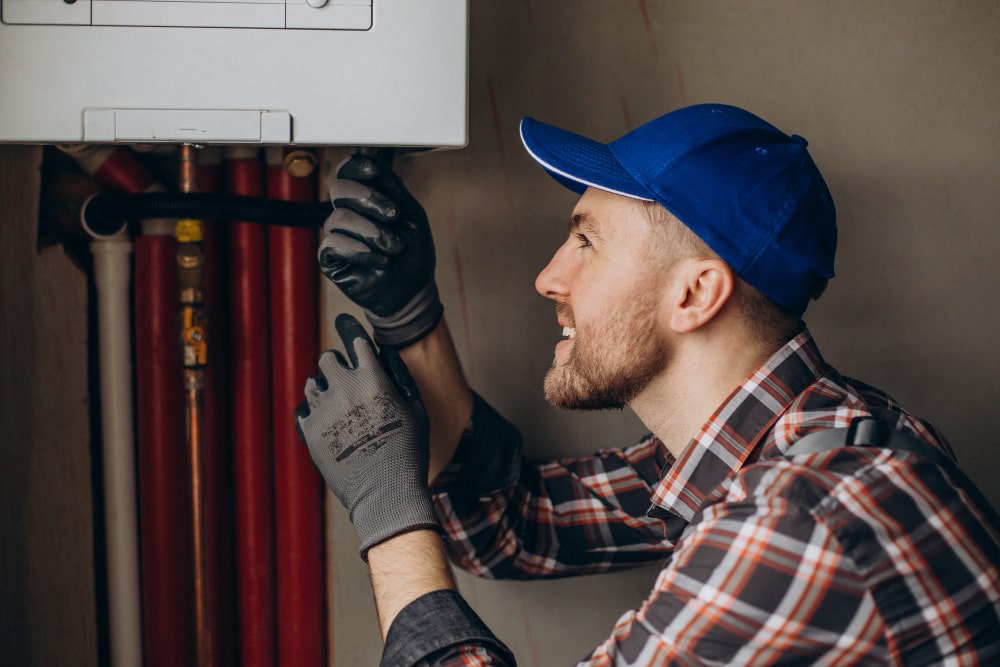Water heaters are essential for maintaining comfort in any home, providing hot water for various daily tasks. However, their efficiency and longevity often depend on how well they are installed initially. Proper installation is crucial for the immediate functioning of a water heater and plays a significant role in minimizing future repair needs. Inadequate or improper installation can lead to various issues, from reduced efficiency to more frequent breakdowns. We will explore how proper installation by plumber in Brooklyn NYC contributes to water heaters’ long-term performance and reliability, reducing the likelihood of repair needs down the line.
The Importance of Correct Sizing for Water Heater Installation
One of the first steps in proper water heater installation is selecting the correct size unit for the household’s needs. A water heater that is too small will be overworked, leading to strain on its components and eventually requiring more repairs. On the other hand, a too large unit may be inefficient, wasting energy and causing unnecessary wear on the system. The correct sizing ensures the water heater operates within its designed capacity, preventing overuse and underuse. When installed properly, the water heater can efficiently meet the demand for hot water without experiencing undue stress. Over time, this reduces the risk of premature failure or the need for repairs that could have been avoided with proper sizing and installation.
Ensuring Proper Ventilation in Water Heater Installations
Another crucial aspect of water heater installation is ensuring proper ventilation, particularly for gas-powered models. Harmful gases like carbon monoxide can build up without adequate ventilation, posing serious safety risks. Additionally, poor ventilation can cause the water heater to overheat or function inefficiently, leading to system malfunctions and the potential for costly repairs. Proper installation includes venting the exhaust gases outside the home through the correct vent pipe or chimney system. By ensuring that the water heater has the proper ventilation, homeowners can avoid the common problems associated with poor airflow, such as overheating, corrosion, and gas buildup. This helps maintain safety and prolongs the appliance’s life, reducing the frequency of repairs.
The Role of Proper Plumbing Connections in Water Heater Installation
Proper plumbing connections are essential for ensuring that water heaters function smoothly and efficiently. If the water heater is not connected to the home’s plumbing system correctly, it can lead to leaks, inconsistent water temperature, or even total system failure. Misaligned or loose connections can result in water seeping out, causing potential water damage to the surrounding area and leading to mold or structural issues. Additionally, improper plumbing connections can affect water flow, resulting in inefficient heating or inconsistent hot water supply. Ensuring all plumbing connections are tight and correctly installed during the initial setup minimizes the risk of leaks and other plumbing-related issues. Proper installation prevents costly repairs related to damaged pipes, fittings, or seals, helping the water heater function as intended for years to come.
Electrical Safety and Its Impact on Water Heater Functionality
Electric water heaters’ electrical connections and safety measures play a vital role in their overall functionality. Incorrectly wired units can result in electrical shorts, malfunctions, or even electrical fires, which pose significant safety risks. Proper installation includes ensuring that the water heater is connected to the appropriate electrical circuit and that the voltage matches the unit’s requirements. Moreover, installing a properly rated breaker and grounding the system is essential to prevent electrical issues that could lead to repairs or even complete system failure. When the electrical components are installed correctly, the water heater operates efficiently, with fewer chances of electrical malfunctions or the need for extensive repairs. Proper installation also helps avoid damage to the unit’s internal components, which can be costly to repair or replace.
Drain Valve and Pressure Relief Valve Installation for Long-Term Safety
During installation, both the drain and pressure relief valves must be installed properly to ensure the water heater’s safety and efficiency. The drain valve allows for flushing the tank to remove sediment buildup, which can affect the unit’s efficiency and lifespan. If the drain valve is not installed correctly, it may cause leaks or make it difficult to perform maintenance tasks like flushing the tank. Similarly, the pressure relief valve is designed to release excess pressure if the water heater becomes too hot, preventing dangerous situations such as explosions. An improperly installed pressure relief valve can fail this important safety feature, increasing the risk of costly repairs or catastrophic damage. Proper installation of these valves ensures that safety and maintenance procedures are managed effectively, reducing the likelihood of system malfunctions or emergency repairs.
Conclusion
Proper installation ensures your system runs smoothly and minimizes the risk of water heater repair down the line. A professionally installed unit will require fewer emergency fixes and costly maintenance over time. By paying attention to details like proper sizing, ventilation, plumbing connections, electrical safety, and valve installation, homeowners can ensure that their water heaters run smoothly with minimal repair needs. Moreover, careful placement and efficient use of resources further contribute to a water heater’s lifespan, reducing the chances of breakdowns and the need for costly repairs. When a water heater is installed correctly, it performs at its peak, providing consistent hot water while minimizing repair expenses over time. As a result, investing in professional installation and proper maintenance can lead to significant long-term savings and peace of mind.
Source: Vertical Wise

